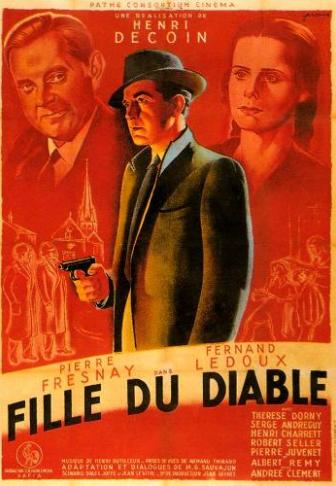![]()
 on 7/31/2023, 3:44 pm
on 7/31/2023, 3:44 pm
Ingredients: one American noir, one French noir.
Mix together into double features.
The series kicks off with two divergent takes on James M. Cain's steamy debut novel THE POSTMAN ALWAYS RINGS TWICE. First up: the Turner-Garfield MGM version from 1946. It's followed by the first adaptation of the novel, LE DERNIER TOURNANT aka THE LAST TURN (1939, directed by Pierre Chenal).

What LE DERNIER TOURNANT gives away in Hollywood glamor, it more than makes up for with its true-to-life proletarian vibe and significantly more down-to-earth performances. Teenager Corinne Luchaire adds a dimension to Cora that will remind you of the "death pact" narratives that cropped up in certain highly venerated Hollywood films from the 50s. Fernand Gravey, slower-witted and more easy-going than Garfield, is more convincing as a drifter who is taken in by Cora's blazing emotional intensity.
And Michel Simon simply blows away his competition (Cecil Kellaway)in the role of Nick, adding his own unique monstre sacré charisma to the proceedings.
THERE are two additional screenings on Saturday, beginning with a barn-burner of a matinee featuring two doomed actresses.
First, DECOY (1946), with Jean Gillie as arguably the nastiest femme fatale in classic American noir.
Next, the singular Andrée Clément as the terminally alienated Isabelle in LA FILLE DU DIABLE (1946), which translates (as you might guess) to THE DEVIL'S DAUGHTER. Like Ann Savage, Clément does not enter the film for awhile, but once she does...

Both actresses died tragically young (Gillie at 33, Clément at 35) so these films are the crowning achievements in what were two sadly shortened careers.
Saturday evening we explore the queasy question that film noir all too often asks: just how much difference is there between criminals and the cops who chase them? The answer is often somewhat variable, but both THE BIG COMBO (1955) and RAFLES SUR LA VILLE (1958) come down on the side of the question that suggested that the difference is often disturbingly slight.
COMBO has the superb behind-the-camera combo of Joseph H. Lewis and John Alton, while RAFLES is helmed by Pierre Chenal, returning to France after his second exile to tell the tale of a bad cop (Michel Piccoli) who becomes so besotted with his partner's pretty young wife (Danik Patisson) that he crosses more than one moral Maginot line.

The three double features provide the first glimpse of "la difference" between the two nations' approach to film noir (which, I'll say again without fear of contradiction, began in France in the early 30s with LA NUIT DU CARREFOUR). Subsequent editions of FRANCO-AMERICAN NOIR are scheduled for mid-October and early December.
Bay Area lurkers are highly encouraged to join us at the 4-Star for these three distinctive double features that will give film noir aficionados plenty of food for thought.
Responses